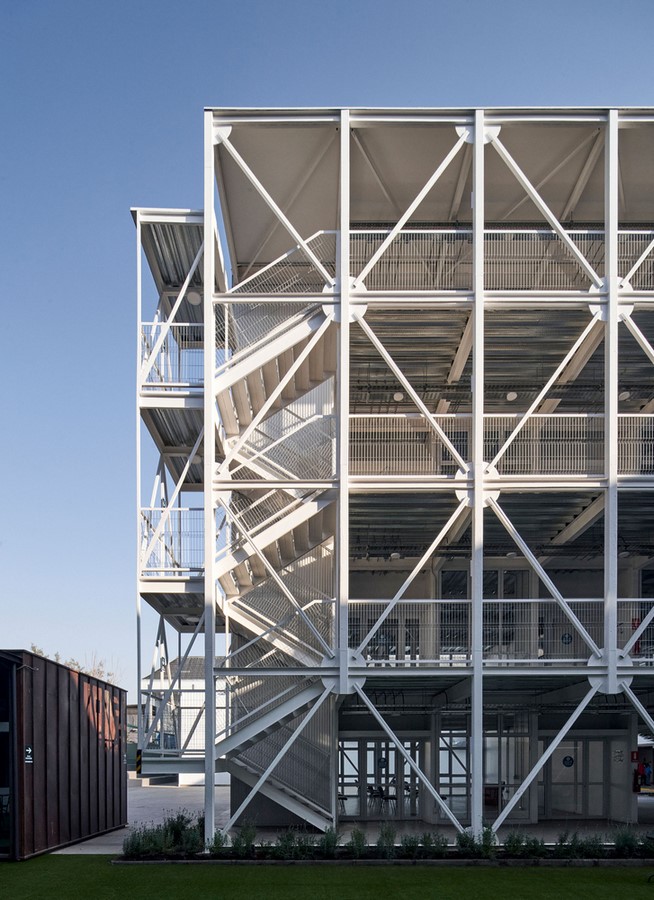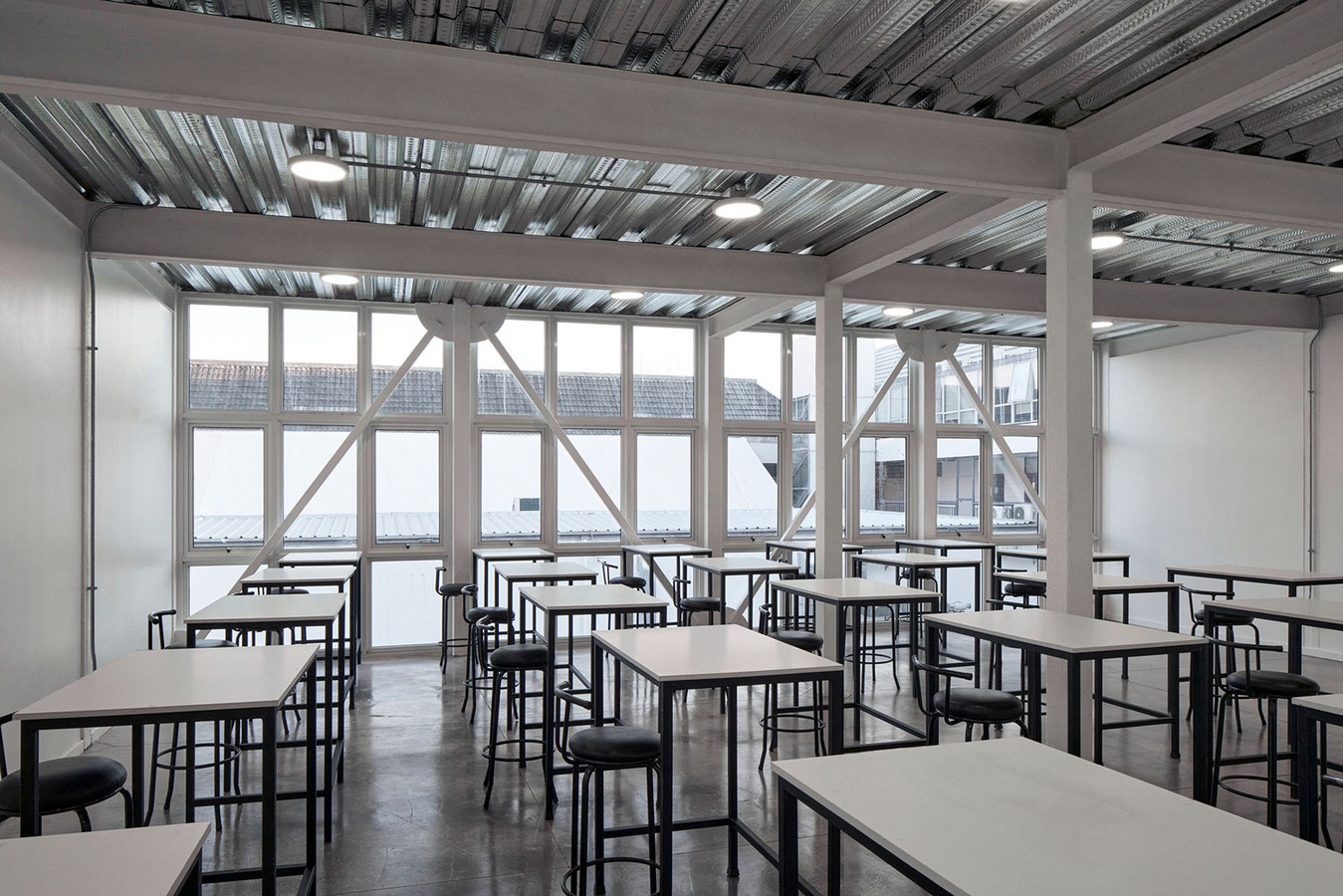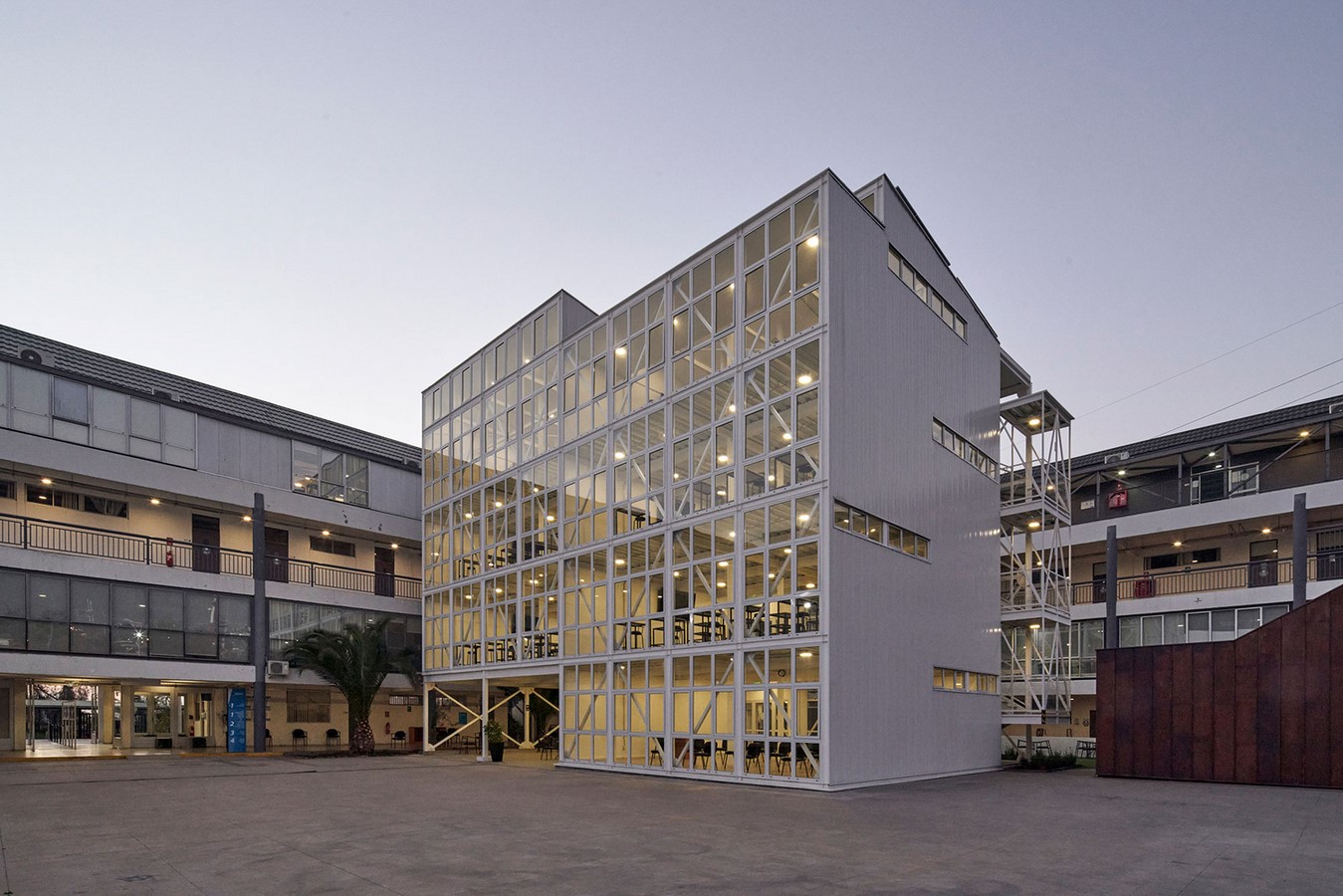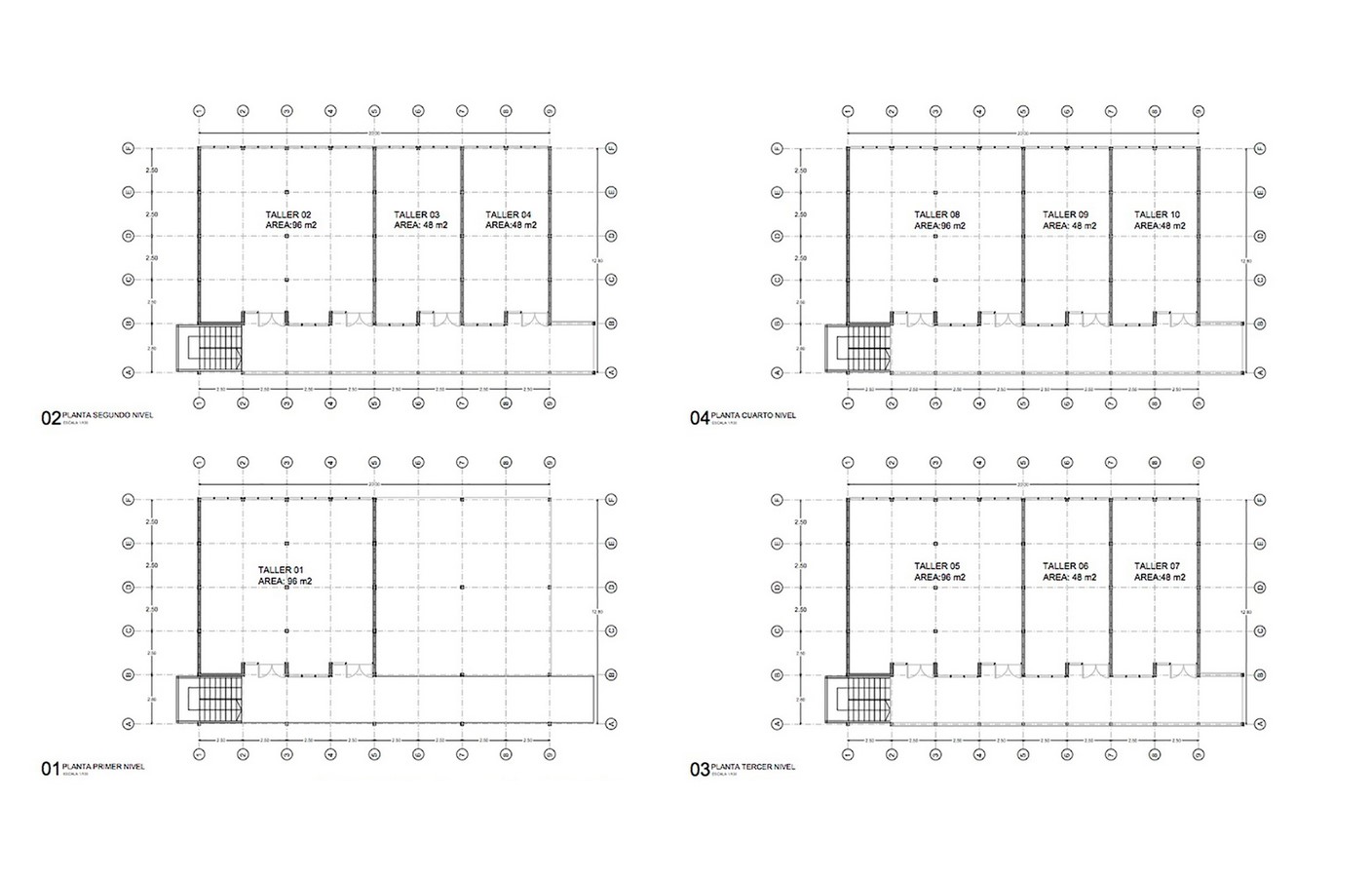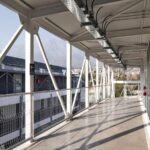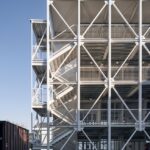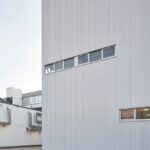Introduction
The Talleres Building, designed by MasPuntoCero Arquitectura in collaboration with Juan Pablo Alvarado Foerster, was commissioned by the ARCOS Institute of Professional Education during the pandemic. Located in Peñalolén, Santiago de Chile, the building serves as an expansion of the institute’s infrastructure to accommodate the increased student capacity. The project aimed for swift execution and cost-effectiveness while maximizing efficiency.

Design and Structure
The building features an iron structural typology with collaborating concrete slabs, vulcometal partitions, metal cladding, and glass panels. The solid iron structure is conceived as an exoskeleton with a regular and straightforward pattern, lending stability and aesthetic appeal to the design.
Natural Lighting and Ventilation
To optimize natural lighting and ventilation, the corridors are positioned to the north, serving as eaves for sun protection, while glass partitions towards the south ensure balanced luminosity throughout the building. This strategic orientation enhances energy efficiency and creates a comfortable indoor environment.
Sustainable Features
The rooftop of the building is equipped with a sloped deck for the installation of solar panels, meeting the energy demands of the structure sustainably. Additionally, a covered yard on the first floor provides protection for recreational activities during all seasons, enhancing the building’s functionality and user experience.
Hi-Tec Brutalist Concept
The project embraces the Hi-Tec Brutalist concept, pioneered by Juan Pablo Alvarado Foerster, emphasizing the aesthetic exploration of raw materials and the integration of emptiness as a design element. Through careful consideration of materials, construction techniques, light, and form, the design achieves a harmonious synthesis of contrasts, elevating the architectural experience.
Conclusion
The Talleres Building stands as a testament to innovative architectural design, blending functionality, sustainability, and aesthetic appeal. By prioritizing efficiency, natural elements, and sustainable practices, the project sets a new standard for educational infrastructure, reflecting a commitment to excellence and environmental responsibility.

